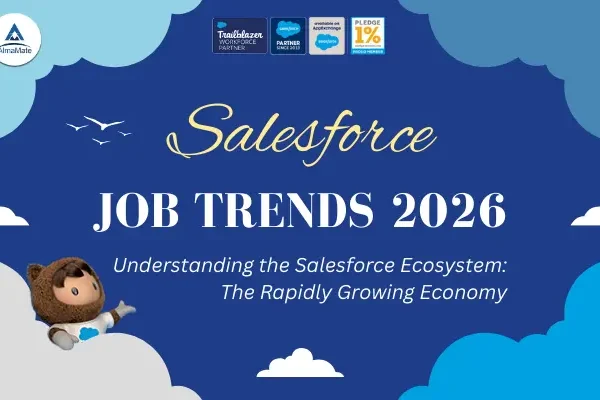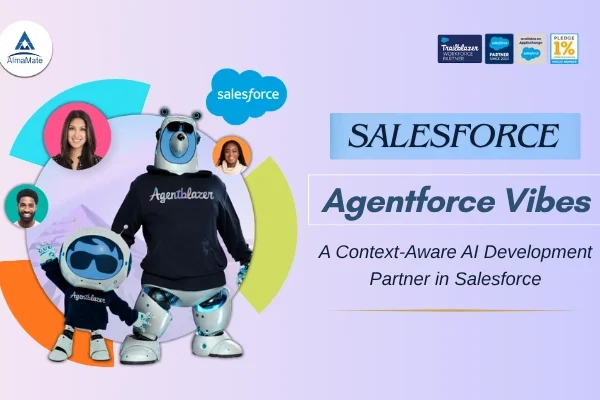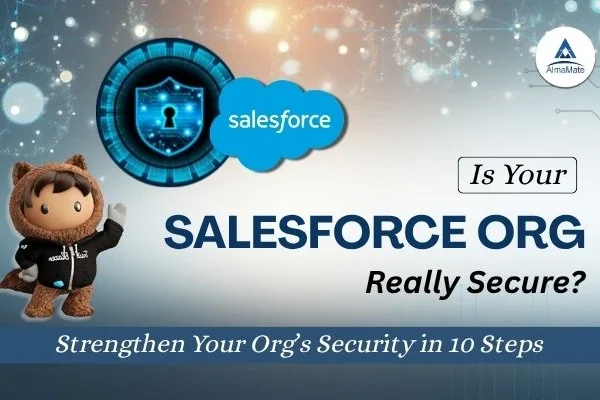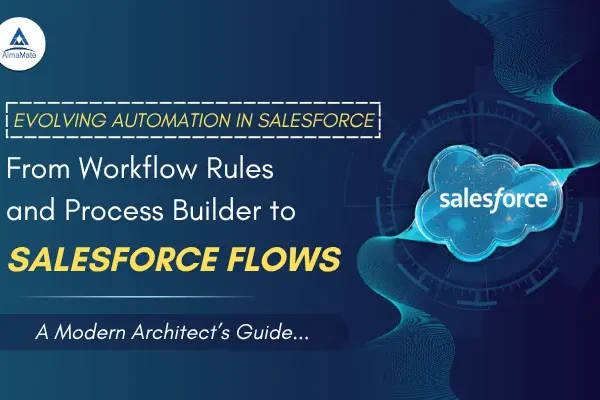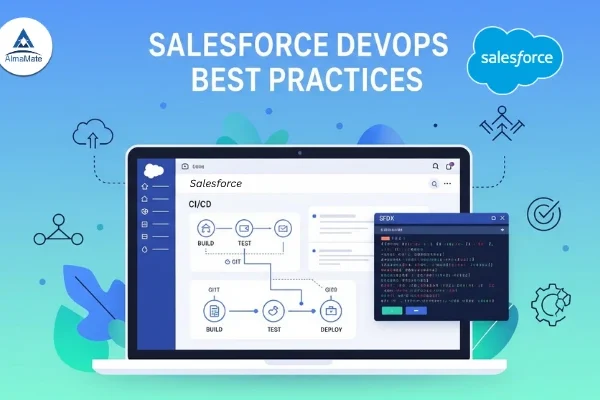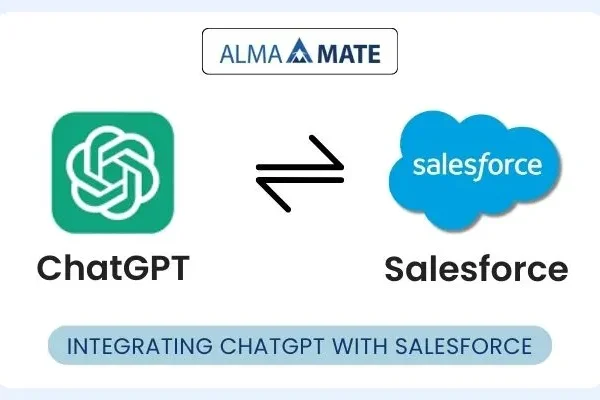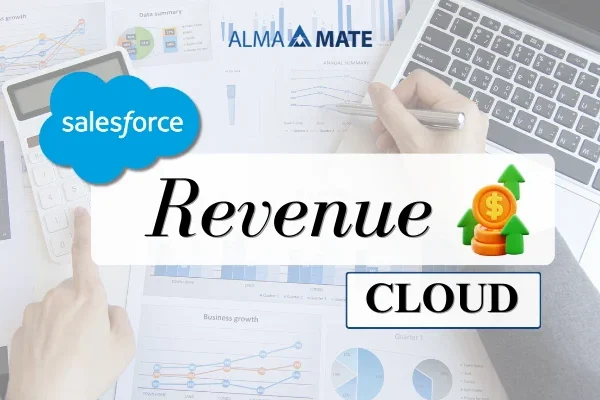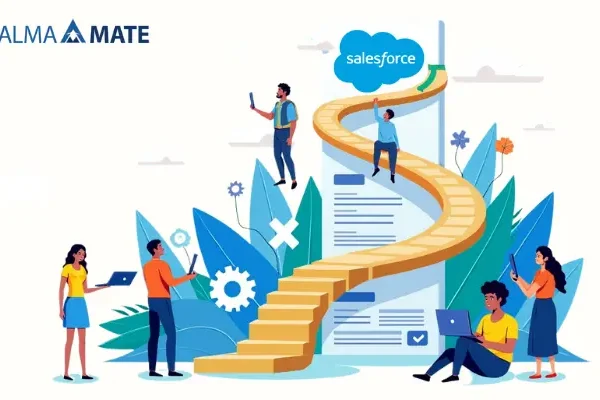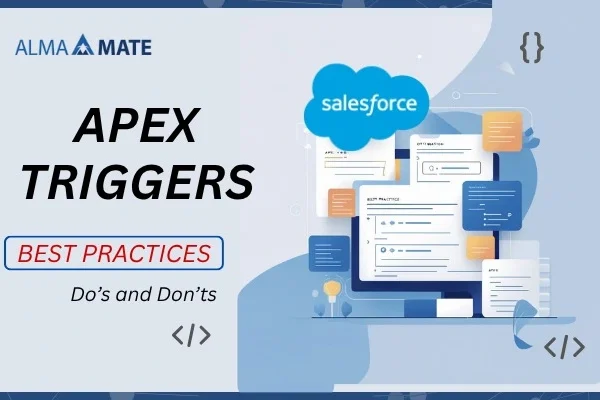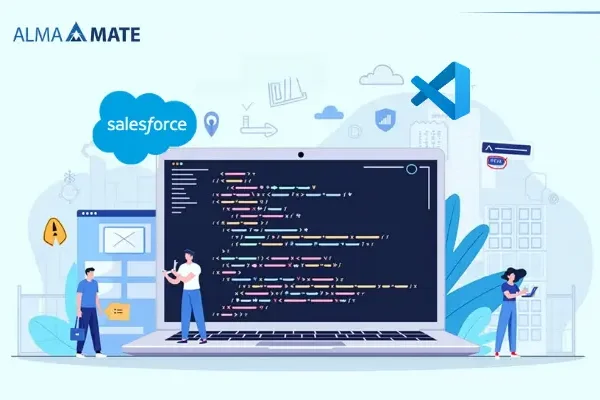Salesforce is a widely used CRM application suite globally. One should be well-versed in Salesforce concepts to perform well in a Salesforce interview. In this article, we are sharing a few Salesforce Interview Questions that will assist you in cracking Salesforce interviews:

1. Basic Salesforce Interview Questions
Q: What is Salesforce, and how is it advantageous for organizations and businesses?
A: Salesforce is a CRM software suite that assists organizations in handling sales, marketing processes, and customer interactions. Salesforce offers the following par excellence:
- One data storage location to retain customers in the database to make informed decisions
- Automation of customer support, lead management, and streamlining workflow
- Scalability according to various sizes of businesses
- Access to the cloud from anywhere
- AI-driven insights using Salesforce Einstein
Q: List the key features of Salesforce.
A: The Following are the key features of Salesforce:
- Lead & Opportunity Management – Salesforce has plenty of features to handle sales leads and opportunities effectively.
- Workflow Automation – Salesforce is capable of automating repetitive and mundane tasks
- Reports & Dashboards—This Salesforce feature offers real-time reporting and dashboards that help with better handling customer data.
- Custom Applications – Applications can be customized using Apex, Visualforce, and LWC
- Integration Capabilities – Salesforce integrates third-party apps through APIs
- AI-based Analytics – Offers Predictive analytics via Salesforce Einstein
Q: What are the various Salesforce editions, and how are they different?
A: Various editions of Salesforce are available to support different business needs:
- Essentials – This edition of Salesforce is meant for Small businesses with very few CRM capabilities
- Professional – The professional edition of Salesforce is meant for small to medium businesses that leverage automation and personalization
- Business – The Business edition is meant for large businesses that make use of APIs and offer advanced reporting
- Unlimited – The Unlimited edition offers the entire set of premium features, which includes 24/7 support
Q: Describe the multi-layered security model of Salesforce’s architecture.
A: Salesforce is built on a multi-tenant platform that has three levels of security:
- Database Layer – This layer helps with customer data storage and metadata
- Application Layer – This layer runs Apex code and analyzes business logic
- User Interface Layer – The user interface layer offers Lightning Experience & Classic UI for the user interface
Q: Why is multi-tenancy so significant in Salesforce?
A: Multi-tenancy enables several businesses to share the same infrastructure but with separate data. The following are a few benefits of multi-tenancy:
- Cost-effectiveness – Sharing resources makes their usage cost-effective
- Automatic Updates – All the tenants receive upgrades without facing issues such as server downtime
- Scalability – Businesses can expand without issues related to infrastructure
2. Apex Programming concepts for Salesforce Interviews:
Q: Apex supports four OOP concepts. Name them and tell us how they are used.
A: Following are the four OOP concepts:
- Encapsulation – Hides data by utilizing private variables and ‘getters’/’setters’
- Inheritance – Allows code reuse using the ‘extends’ keyword
- Polymorphism – Allows method overriding using ‘virtual’ and ‘override’ keywords
- Abstraction – Allows logic abstraction using abstract classes and interfaces.
Q: List the differences between abstract & virtual classes?
A: Following are the differences between abstract and virtual classes:
- Abstract classes: These cannot be instantiated & must be subclassed
- Virtual classes: Virtual classes can be overridden in child classes.
Q: What is an Apex interface, and how is it used?
A: An Apex interface does not declare the method of implementation but only its signatures. The implementing classes must declare the methods.
3. SOQL & SOSL Queries
Q: What are SOQL and SOSL, and how are they different?
A: Following are the definitions of SOQL and SOSL:
- SOQL (Salesforce Object Query Language): This language queries a single object’s records
- SOSL (Salesforce Object Search Language): This language searches for multiple objects
Q: How do you avoid hitting governor limits with SOQL queries?
A: Following are a few ways one can avoid hitting governor limits with SOQL queries:
- Reference indexed fields in WHERE clauses
- Don’t use queries inside loops
- Use selective queries through filters
4. Triggers
Q: What is a Salesforce trigger, and how does it work?
A: Triggers are blocks of Apex code executed before or after data modifications in Salesforce.
Q: What is the difference between “before” & “after” triggers?
A: Following is the major difference between “before” & “after” triggers:
- A Before Trigger is used to validate and update fields
- An After Trigger is used to execute operations such as creating (related) records
Q: What are trigger context variables and how are they useful?
A: Context variables such as Trigger.new and Trigger.old provide access to records being processed within a trigger.
5. Salesforce Automation Tools
Q: How are Workflow Rules, Process Builders, and Flows different from each other?
A: Following are the definitions of Workflow Rules, Process Builders, and Flows:
- Workflow Rules: These allow basic automations and offer a limited range of actions
- Process Builders: These are more sophisticated than workflows & allow multiple criteria to be input.
- Flows: These are regarded as the most powerful among the 3 automation tools and also allow user interaction.
Q: How do you build a record-triggered flow in Salesforce?
A: A record-triggered flow can be built using the Flow Builder to set up the trigger criteria and actions.
6. Asynchronous Apex
Q: What is Asynchronous Apex and why is it used?
A: Asynchronous Apex runs processes in the background, thus avoiding performance lags & imminent delays.
Q: List the differences between Future Methods, Batch Apex, Queueable Apex, and Scheduled Apex?
Feature | Purpose |
Future Methods | Runs a single process asynchronously |
Batch Apex | Processes large datasets in batches |
Queueable Apex | Supports job chaining |
Scheduled Apex | Runs at scheduled intervals |
7. Data Management
Q: Different methods for importing data in Salesforce?
A: Following are the methods to import data into Salesforce:
• Data Import Wizard: For small imports (less than 50,000 records)
• Data Loader: For bulk data operations (more than 50,000 records)
Q: How are REST, SOAP, Bulk, and Streaming APIs different from each other?
A:
|
API Type |
Use Case |
|
REST API |
Lightweight, used for web integrations |
|
SOAP API |
XML-based, supports complex transactions |
|
Bulk API |
Handles large volumes of records |
|
Streaming API |
Provides real-time data updates |
8. Security & Sharing
Q: What are Organization-Wide Defaults (OWD)?
A: OWD settings define the baseline level of access to records within an org.
Q: How do Profiles and Permission Sets differ?
A: Following are their definitions:
- Profiles: Define default permissions for users
- Permission Sets: Grant additional access to users without changing their profiles or editing their profile settings.
Q: How does Role Hierarchy influence access to data?
A: Lower roles’ access is rolled up to higher roles.
9. Governor Limits & Best Practices
Q: What are Salesforce Governor Limits?
A: Using Governor Limits, Salesforce limits resource use for multi-tenant stability.
Q: Is there a limit on SOQL queries per transaction?
A: A maximum of 100 SOQL queries are allowed per synchronous transaction.
Q: How can one avoid DML operation limits?
A: DML Operation Limits can be avoided by utilizing Batch Apex and bulk process techniques.
10. Salesforce Integration
Q: What are the types of integration that Salesforce offers?
A: Following are the types of integration offered by Salesforce:
- API Integrations such as REST & SOAP
- Middleware Solutions such as MuleSoft & Dell Boomi
- File-Based Imports (CSV, Excel)
Q: What are REST and SOAP callouts?
A: Salesforce utilizes REST and SOAP callouts to call external systems using HTTP requests.
11. Reports & Dashboards
Q: What are the different types of reports available in Salesforce?
A: Salesforce offers the following 4 types of reports:
- Tabular Reports –These reports have a tabular structure, which is created in a plain/basic format
- Summary Reports – These reports group data with totals
- Matrix Reports – These utilize rows and columns
- Joined Reports– These reports merge different report types together
Q: How are Dynamic Dashboards different from Static Dashboards?
A: Following are their definitions:
- Dynamic Dashboards: Show data pertaining to the user who is logged in
- Static Dashboards: Show the same information to all users
Conclusion:
Learning these Salesforce concepts and related technical jargon shall boost your chances of clearing the Salesforce interview multifold!
Mastering Salesforce concepts and gaining hands-on experience will significantly increase your chances of acing any Salesforce interview. Make sure to practice coding, understand core concepts, and stay updated with the latest Salesforce releases.
Looking to get certified and boost your career? Join AlmaMate’s Salesforce Developer program today!
Gain practical skills, hands-on training, and expert mentorship to land your dream job.
- Enroll now and transform your career with AlmaMate!
- Visit AlmaMate to learn more.
All the best!





